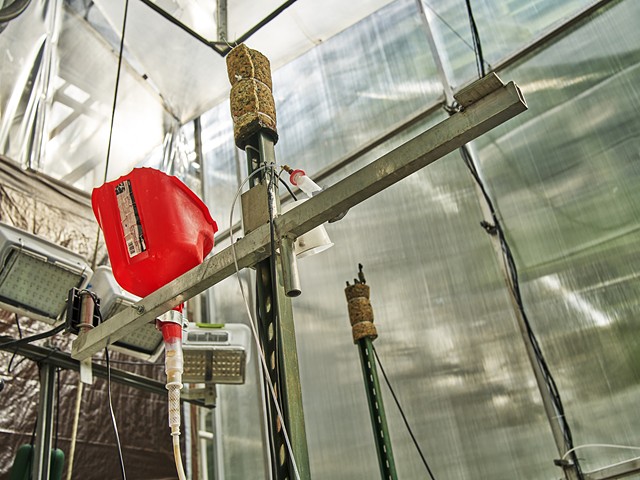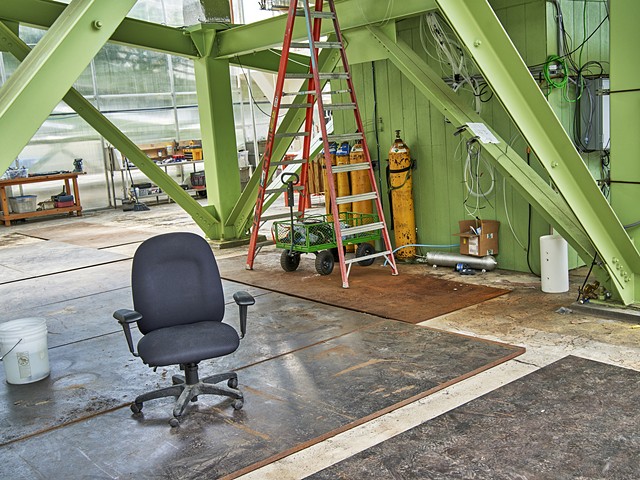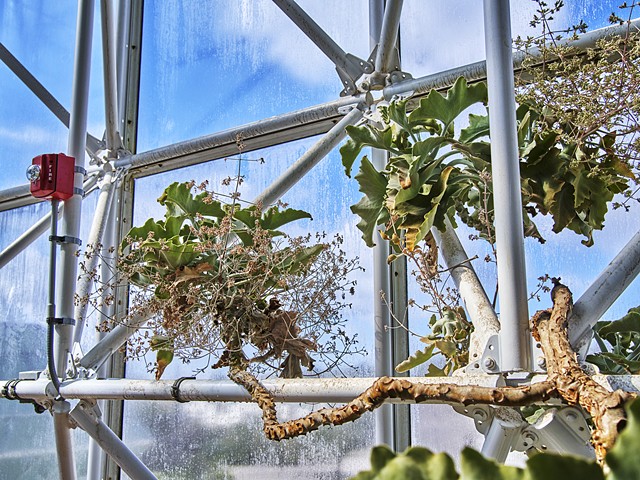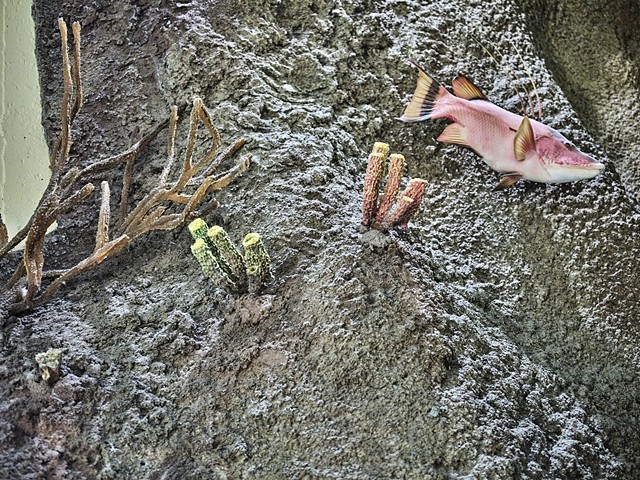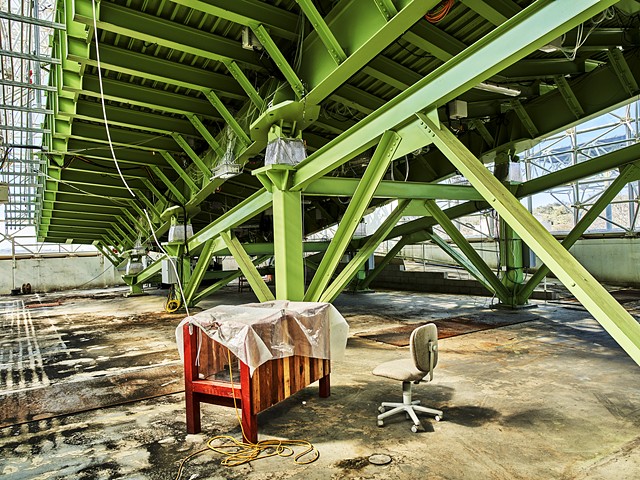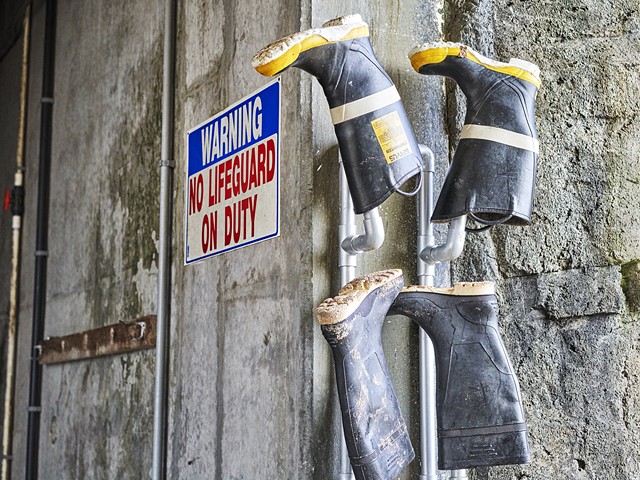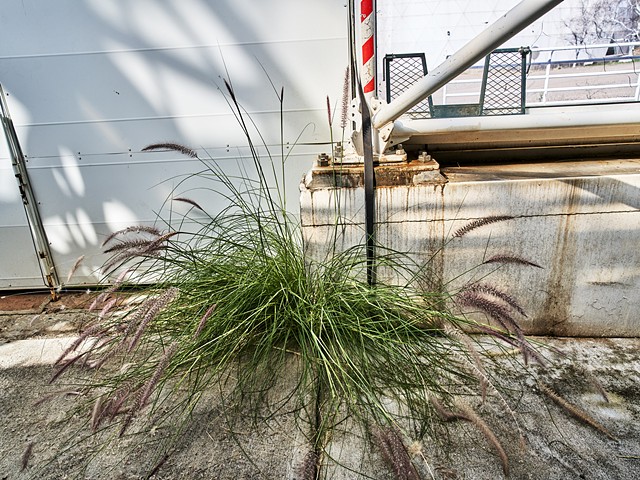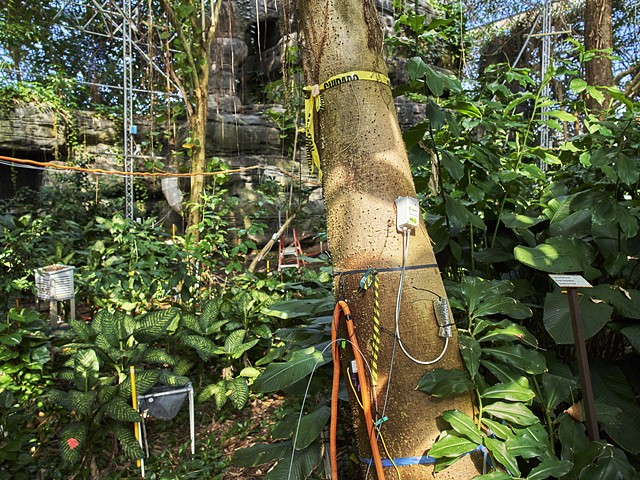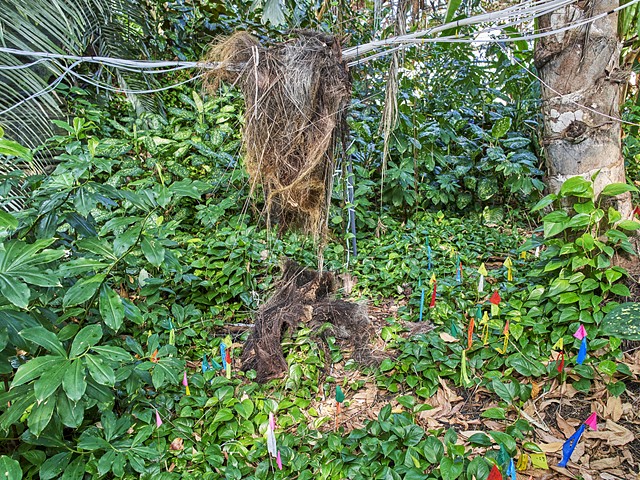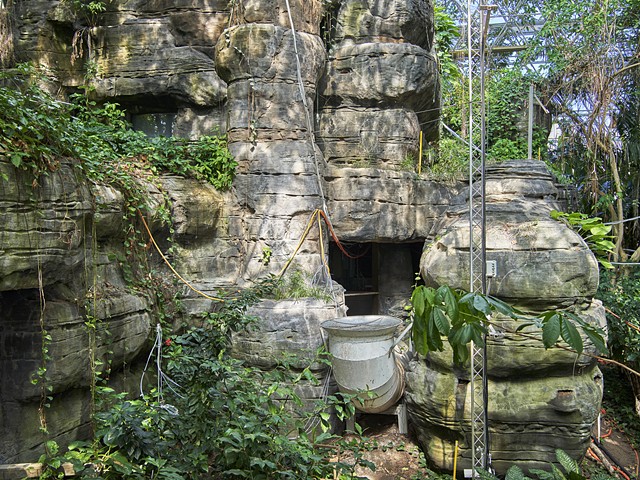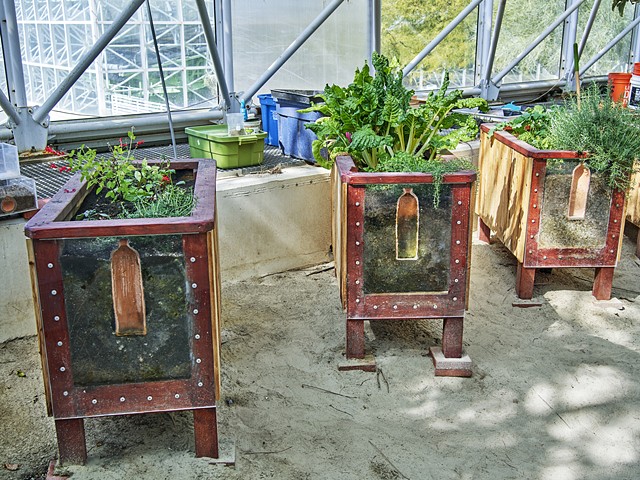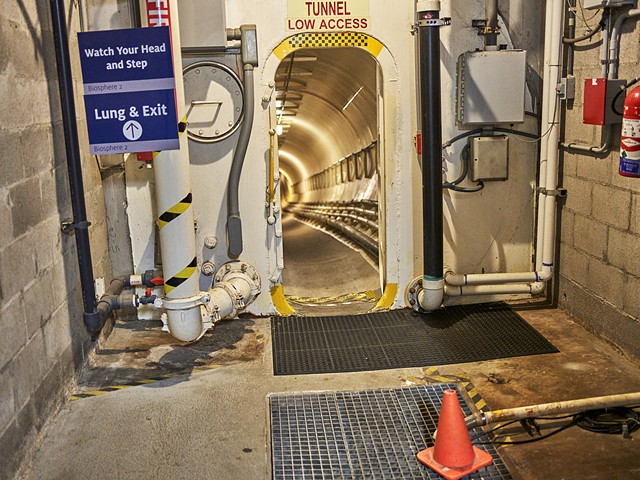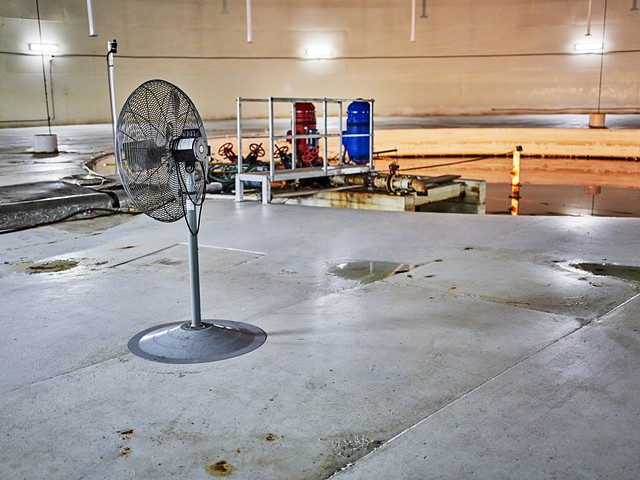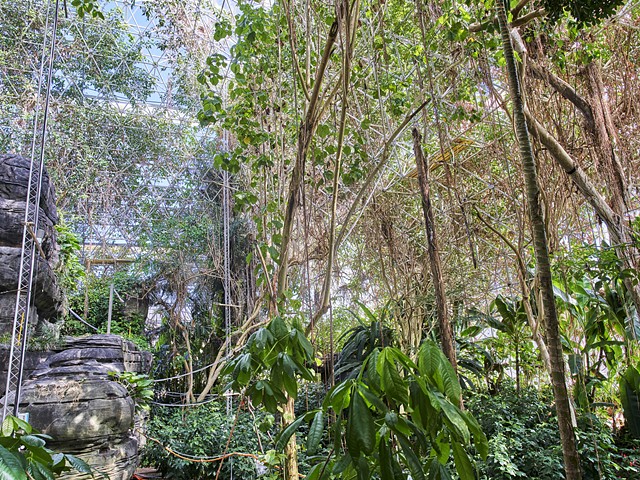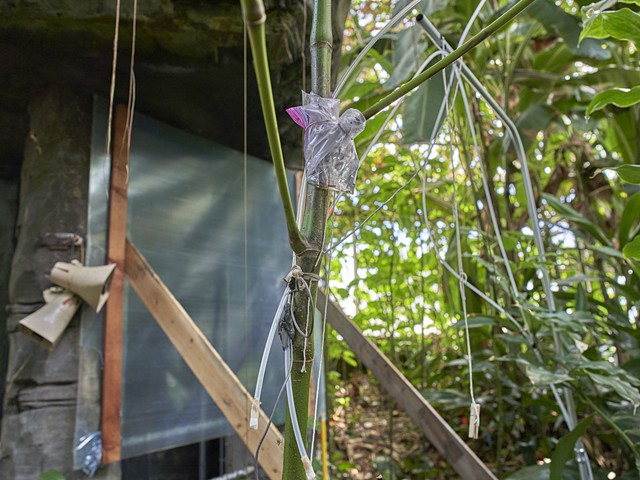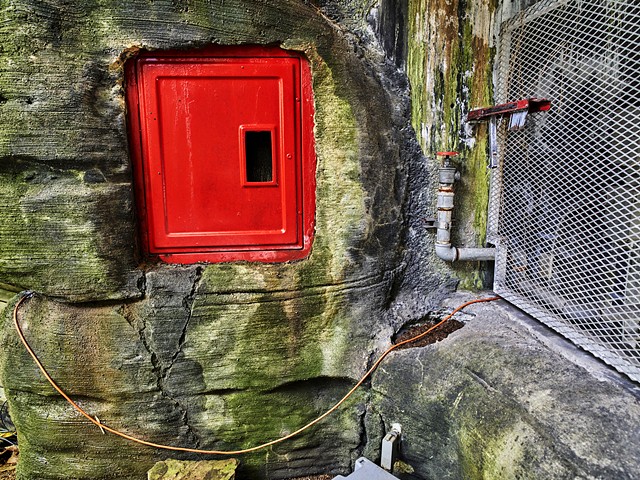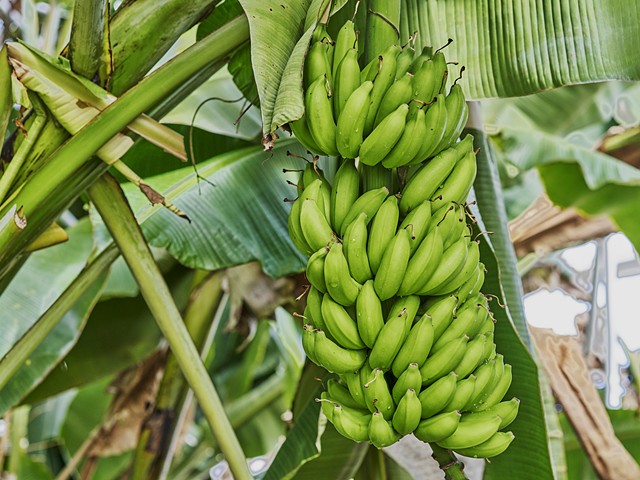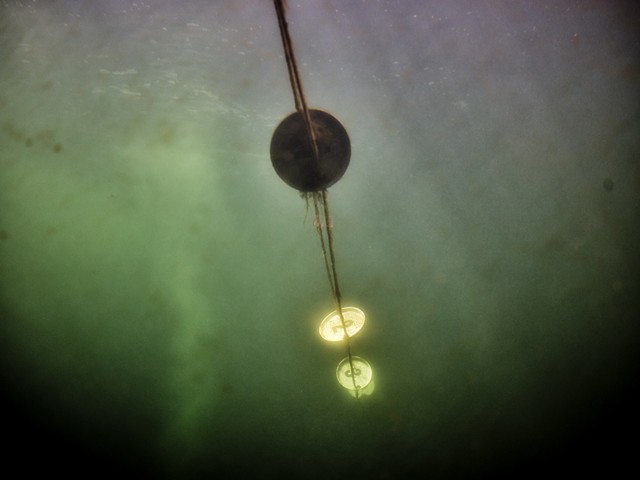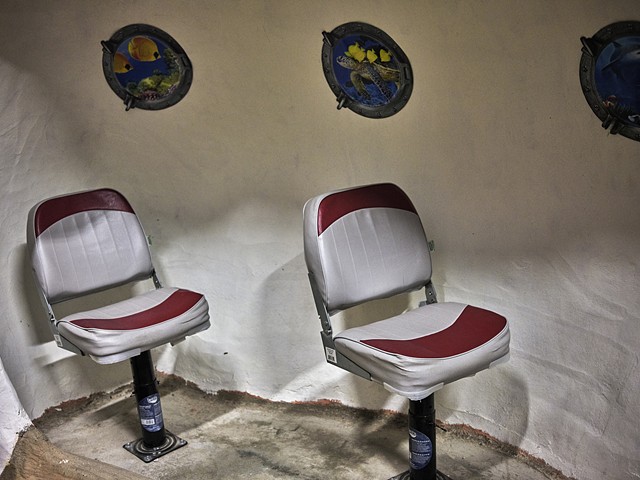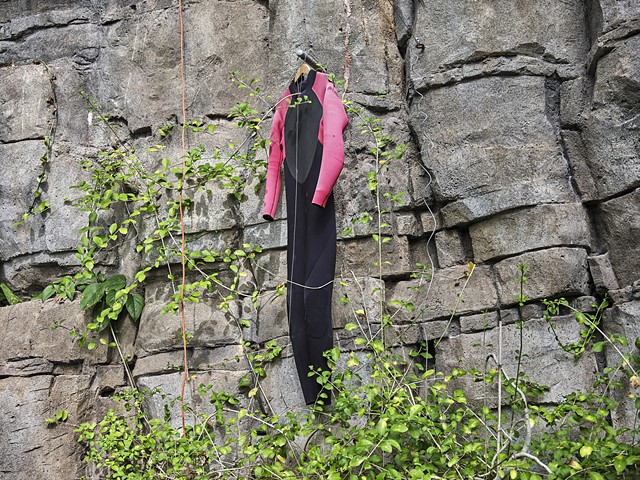Tending to Eden
The Rainforest in the Desert
2020
Presently, Biosphere 2 is a University of Arizona research facility located in Oracle, Arizona. It is a 3.14-acre structure originally built in 1991 as an artificial compound of closed ecological systems or a vivarium. Six biomes are contained within it – Tropical Rainforest, Ocean, Savanna, Mangrove, Desert and Model City. It remains the largest closed structure of ecological systems ever created.
The origins, history and current applications of Biosphere 2 are controversial and shrouded in mystery. Its trajectory since 1991 has been a theatrical narrative of serious science, financial stress, personnel pitfalls, embarrassments and substantive accomplishments. Supported by a research grant from the University of Arizona, I wandered freely within this closed system and absorbed its paradoxes. A rainforest in the desert? The strangeness of the transition as I first entered Biosphere 2 from the arid Sonoran desert into a domed, dripping-wet rainforest was a combination of disbelief and amazement. Were these moments of hope or despair glimpses of utopia or dystopia? This controlled environment is a strange and fascinating place characterized by institutional regimen, laboratory machinations and eerie juxtapositions between human and flora agendas.
Current research at Biosphere 2 centers on climate change – evaluating it, determining its impact on our planet and searching for ways to minimize or adapt to it. These fabricated biomes allow scientists to study climate change at a more tightly controlled level as compared to the “real” world and on a grander scale as compared to smaller more conventional laboratories. Each biome has its hermetic space in the Biosphere. The machinery, technologies and residues of science partner with each environment. This micro-universe allowed me to photograph from ocean to desert to tropics to grasslands by taking just a few short steps from one part of the world to the next.

